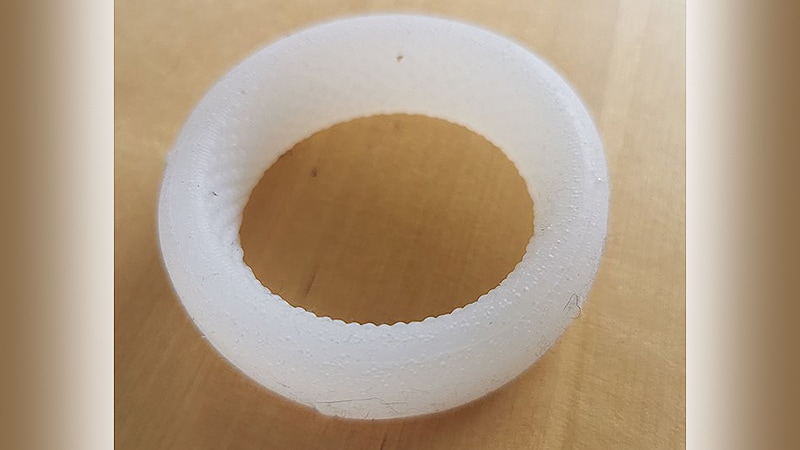PARIS — For 70% of couples, it is assumed that contraception is the responsibility of the woman. There is a societal trend toward shifting the responsibility for contraception toward men. Vincent Foulonneau, a statistician at Toulouse University Hospital in France, presented a study on the tolerance of the Andro-Switch contraceptive testicular ring at the French Association of Urology Congress 2022.
Today, the World Health Organization recommends three types of male contraception: the male condom, the withdrawal method, and vasectomy.
The silicone contraceptive ring — which is not one of the recommended methods of contraception — is based on the same principle as heated contraceptive underwear. It involves inducing germ cell apoptosis through testicular heating. But for this to occur, the device must be worn for 15 hours a day, and it does not become effective for 3 months.
Its use was suspended by the French National Agency for Medicines and Health Products Safety in mid-December 2021 owing to its lack of CE marking — “the only way to ensure its effectiveness and safety of use.” However, it is still being sold as a “work of art” for around €40 ($42) by the company Thoreme.
Reasons for Use
At the end of 2021, Foulonneau and colleagues conducted a small, independent, observational, cross-sectional study to assess the motivations of those using this device, its tolerance profile, and the sexologic consequences of its use.
Participants were recruited via consultations with the aim of providing support. An online questionnaire was then sent to 75 men. In total, 37 responses (40.3%) were received.
The questionnaire comprised 15 questions: three on epidemiology, one on motivations, three on observance, four on adverse effects (such as discomfort, pain, skin disorders, discomfort during sporting activities), and four on sexual impact.
Regarding the user profile, 40.5% were men aged 30 to 34 years, 24.3% were men aged 24 to 29 years, 21.6% were men aged 35 to 39 years, 8.1% were men aged 40 years and older, and 5.4% were men younger than 24 years. The majority were part of a couple (78.4%); the duration of these relationships was 1 to 6 years for 76% of participants.
The main motivations for using the ring were sharing the mental load within the couple (89.2%), avoiding the partner becoming pregnant (78.4%), the reversible nature of the device (73%), difficulty finding a suitable or well-tolerated female contraceptive method (67.6%), and ease of use (43.2%).
Data on Tolerability
In response to the question of whether it was difficult to wear the device for 15 hours a day, on a scale of 0 to 10, 33.3% responded “not at all” (score 0), 42% chose a score of 1 to 3, and 16% chose a score of 8 to 10, or “a lot.”
Overall, almost 20% of respondents had stopped using the contraception at least temporarily during the previous 3 months
Regarding adverse effects, 20% reported none, 28.6% reported discomfort, 8.6% reported pain, 74.3% reported skin disorders (redness, irritation, itching), and 11.4% reported discomfort during regular sporting activity.
In terms of sexuality, frequency of relations, quality of relations, and libido remained unchanged in 85.7%, 88%, and 88.6% of respondents, respectively. Quality of relations and libido improved for 11.4%.
The speaker highlighted that the data are reassuring in terms of sexuality, but the tolerance profile does not seem optimal: 80% of participants experienced minor adverse effects, and three stopped using the device because of poor tolerance.
Foulonneau mentioned that one of the study’s limits was that half of the users did not respond to the survey.
Although the efficacy of the device was not analyzed (the spermiogram data were not complete), Foulonneau mentioned that an unwanted pregnancy had occurred while a participant was using this method of contraception.
“Its efficacy is the real question. Broader studies are required to assess it,” Foulonneau told Medscape Medical News. “This method of contraception is still being tested, and as this device has no CE marking, it should not be recommended in everyday practice,” he concluded.
This article was translated from the Medscape French edition.
Source: Read Full Article
